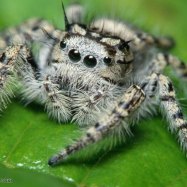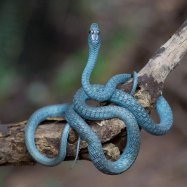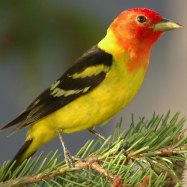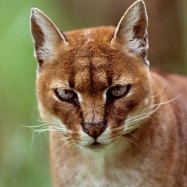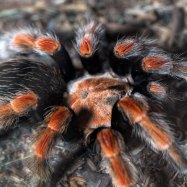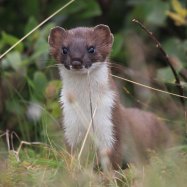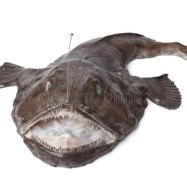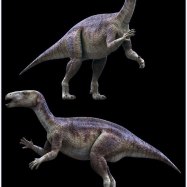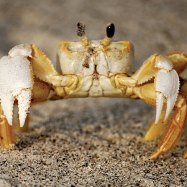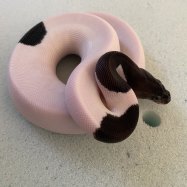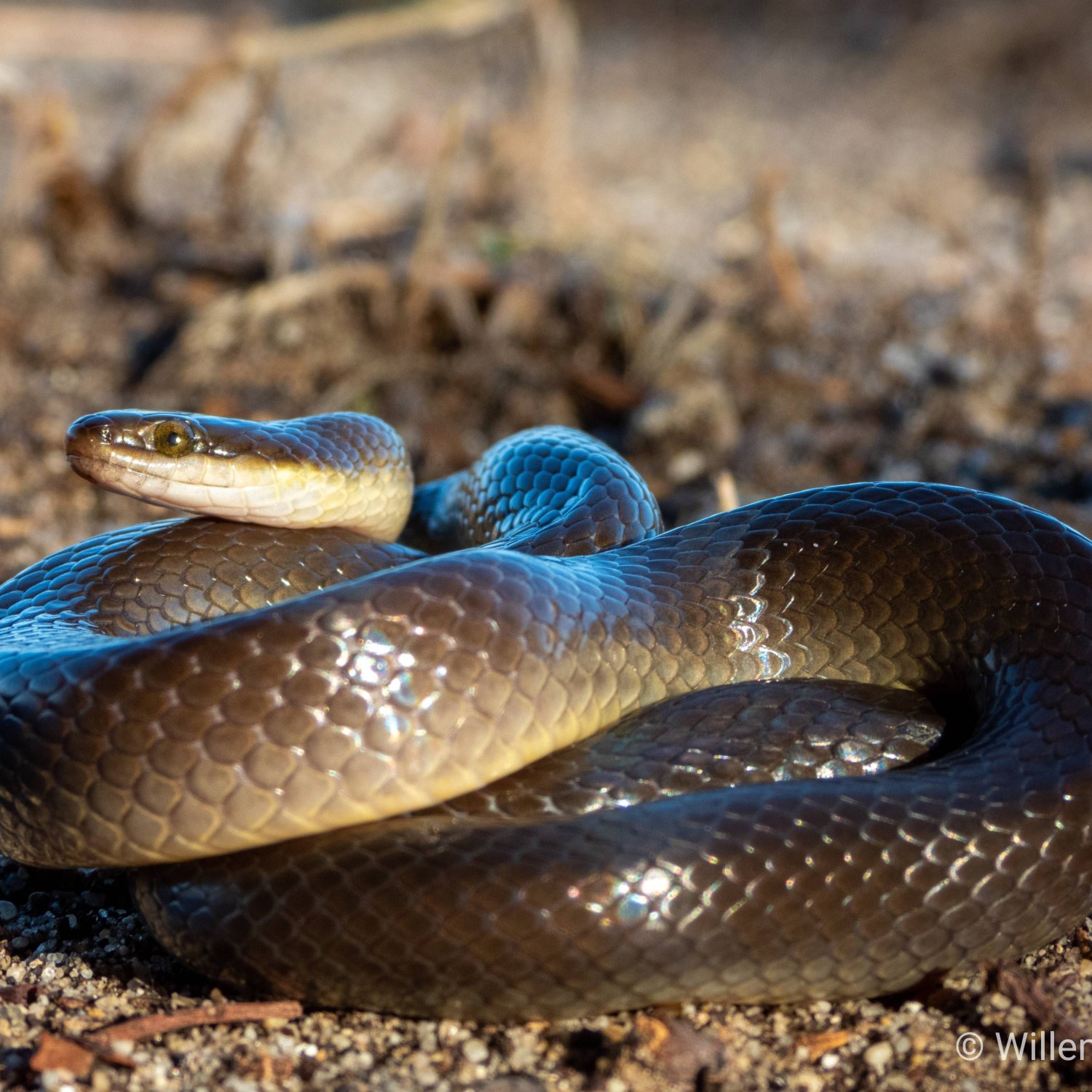
Brown Snake
Up to 1.8 meters (5.9 feet)
The Brown Snake, found in eastern and southeastern Australia, is a member of the Elapidae family. With a slender and elongated body, these snakes can reach up to 1.8 meters (5.9 feet) in length. Be cautious when encountering this species as their venom can be fatal. #BrownSnake #AustralianSnakes #Elapidae #Venomous #Dangerous #Reptiles
Animal Details Summary:
Common Name: Brown Snake
Kingdom: Animalia
Habitat: Grasslands, woodlands, forests, and coastal areas
The Fear-Inducing Brown Snake: A Closer Look at Pseudonaja Textilis
When it comes to snakes, one species often sends shivers down people's spines - the notorious brown snake. This slithering creature, scientifically known as Pseudonaja textilis, is a highly venomous reptile that is native to Australia. Despite its small size, this snake is a force to be reckoned with, making it a fascinating yet feared animal in the animal kingdom.In this article, we'll take a closer look at the brown snake, from its habitat, feeding habits, to its physical characteristics and why it has earned the reputation of being one of the deadliest snakes in Australia Brown Snake.
The Brown Snake's Taxonomy
Before we delve into the depths of its behavior and characteristics, let's first understand where the brown snake stands in the animal kingdom. The brown snake belongs to the kingdom Animalia, the equivalent of the animal kingdom, and its phylum is Chordata, making it a vertebrate. It belongs to the class Reptilia, which includes turtles, crocodiles, and lizards. The brown snake falls under the order Squamata, which comprises snakes and lizards. Finally, it belongs to the family Elapidae, which also includes cobras, mambas, and sea snakes.The Natural Habitat of the Brown Snake
The brown snake is found in eastern and southeastern regions of Australia, with its distribution extending from the Queensland border down to South Australia. Within these regions, the snake can be found in various habitats, including grasslands, woodlands, forests, and even coastal areas. They tend to prefer open areas with plentiful sunshine, such as farmland and cleared land.While they may venture into urban areas, they are commonly found in their natural habitat of grasslands, hence the name "grass snake Blacknose Shark." They are also adaptable and can inhabit various environments, including rocky hillsides, wetlands, and even urban gardens. Their wide distribution and ability to thrive in different habitats make them one of the most commonly encountered snakes in Australia.
The Notorious Brown Snake's Feeding Habits
Like most snakes, the brown snake is a carnivore, meaning its diet solely consists of meat. As opportunistic hunters, they will prey on whatever is available to them, including small mammals, lizards, birds, and other snakes. They are also known to consume carrion, making them vital scavengers in their ecosystem.To capture their prey, brown snakes use their venom, which they inject through their sharp fangs. They have a potent venom, reported to be the most toxic among all Australian land snakes. This toxic venom attacks the prey's nervous system, causing paralysis and eventually death. Due to this potent venom, the brown snake is responsible for the highest number of snakebite-related deaths in Australia.
A Closer Look at the Brown Snake's Physical Characteristics
From afar, the brown snake may appear unremarkable in terms of physical appearance. However, as we take a closer look, we'll see that this reptile has many outstanding characteristics that set it apart from other snake species.One of its most identifiable features is its coloration, which can vary from light brown to dark brown or even black. They can also have banding or blotches along their body, making their appearance unique and varying from one individual to another. This coloration allows them to blend in with their surroundings, making it easier for them to ambush their prey and hide from predators.
In terms of body shape, brown snakes have a slender and elongated build, with an average length of 1.2 to 1.5 meters (3.9 to 4.9 feet). However, some individuals can reach up to 1.8 meters (5.9 feet) in length. They have a distinct head with a slightly flattened snout, which they use to dig through loose soil and leaf litter in search of prey.
Living in Harmony with the Brown Snake
Despite its deadly reputation, the brown snake plays a crucial role in its ecosystem. As predators, they help keep the population of small mammals, insects, and other prey species in check. Additionally, their venom contains proteins that are being studied for their potential use in medicine, particularly in stroke treatments.However, when it comes to coexisting with humans, proper precautions must be taken, as a snake encounter can turn deadly. If you ever come across a brown snake in the wild, the best course of action is to give it a wide berth and let it be. Brown snakes are shy and try to avoid human contact, only acting in self-defense when provoked.
Conservation Efforts for the Brown Snake
Due to its wide distribution and adaptability, the brown snake is currently not a threatened species. However, they may face some local declines due to destruction of habitat and human-animal conflict.To ensure the survival of this species, it's essential to protect their habitats from destruction and educate the public on proper snake safety and awareness. By learning how to safely coexist with these creatures, we can contribute to their conservation and appreciate the vital role they play in maintaining a balanced ecosystem.
In Conclusion
The brown snake, or Pseudonaja textilis, is a unique and fascinating creature that calls Australia its home. From its highly venomous bite to its adaptable nature, this snake has earned a notorious reputation in the animal kingdom. While they may strike fear in many, it's essential to understand and appreciate this creature's role in its ecosystem and learn how to coexist safely with them. With proper education and conservation efforts, we can continue to admire and respect the brown snake while ensuring its survival for future generations.

Brown Snake
Animal Details Brown Snake - Scientific Name: Pseudonaja textilis
- Category: Animals B
- Scientific Name: Pseudonaja textilis
- Common Name: Brown Snake
- Kingdom: Animalia
- Phylum: Chordata
- Class: Reptilia
- Order: Squamata
- Family: Elapidae
- Habitat: Grasslands, woodlands, forests, and coastal areas
- Feeding Method: Carnivorous
- Geographical Distribution: Eastern and southeastern Australia
- Country of Origin: Australia
- Location: Eastern and southeastern Australia
- Animal Coloration: Variable from light brown to dark brown or black
- Body Shape: Slender and elongated
- Length: Up to 1.8 meters (5.9 feet)
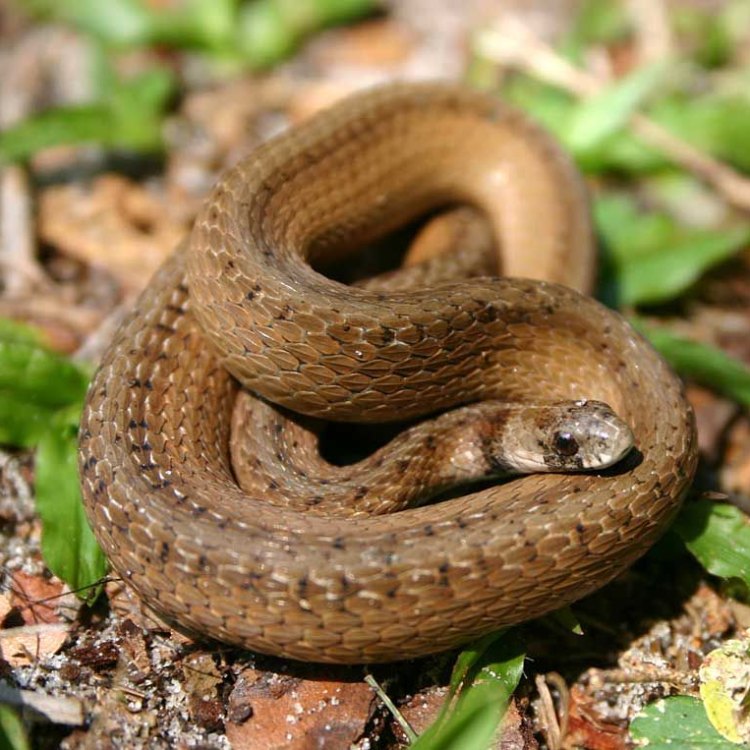
Brown Snake
- Adult Size: Up to 1.8 meters (5.9 feet)
- Average Lifespan: 10-20 years
- Reproduction: Sexual
- Reproductive Behavior: Mating occurs in early spring
- Sound or Call: No specific sound or call
- Migration Pattern: Non-migratory
- Social Groups: Solitary
- Behavior: Nocturnal and secretive
- Threats: Habitat loss, accidental killing, and persecution
- Conservation Status: Least Concern
- Impact on Ecosystem: Apex predator, helps control rodent populations
- Human Use: Not commonly used by humans
- Distinctive Features: Smooth scales, distinct head, and round pupils
- Interesting Facts: The brown snake is one of the most venomous snakes in the world
- Predator: Birds of prey, larger snakes, and mammals
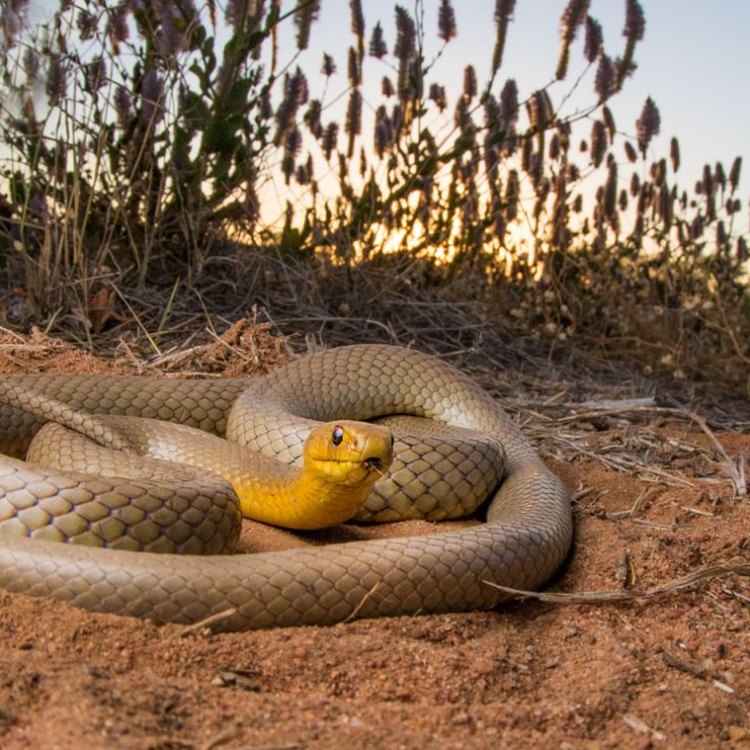
Pseudonaja textilis
The Mighty Brown Snake: An Apex Predator
Nestled in the dense underbrush of forests and grasslands lies a creature that evokes fear and fascination - the brown snake. With its distinctive features and impressive size, this snake has earned the title of an apex predator in its ecosystem. Known for its venomous bite and elusive behavior, the brown snake is a captivating species that deserves to be explored further.Size and Lifespan:
The brown snake, also known as the eastern brown snake or the common brown snake, can grow up to 1 PeaceOfAnimals.Com.8 meters (5.9 feet) in length, making it one of the largest species of snakes in the world. Its size is an advantage when hunting for prey, as it can easily overpower and consume animals larger than itself. However, it is a relatively slender snake, with a long, thin body and a small, pointed head.
In terms of lifespan, brown snakes can live up to 10-20 years in the wild. This may seem like a short lifespan compared to other animals, but for a snake, it is quite impressive. Factors such as habitat quality, food availability, and human interference can affect their lifespan, but on average, they can live up to two decades.
Reproductive Behavior:
The brown snake is a sexual species, meaning that they reproduce through sexual activity. Mating occurs in early spring when males engage in combat to win over females Brown Bear. This behavior, known as "combat dance," involves the males intertwining their bodies and pushing against each other until one submits. The winner then mates with the female, and she can produce anywhere between 10-25 eggs.
After laying her eggs, the female will leave them to incubate in the warm soil or leaf litter. Unlike other snake species, brown snakes do not provide parental care, and the hatchlings are left to fend for themselves.
Sound or Call:
Despite being a highly venomous and feared creature, the brown snake does not have a specific sound or call. In fact, most snakes do not have vocal cords and cannot produce sounds. They rely on visual and chemical cues to communicate with other snakes and animals in their environment.
Migration Pattern:
The brown snake is a non-migratory species, meaning that they do not have a set migration pattern. They usually stay in the same area, only venturing out to find food, mates, or more suitable living conditions. However, there have been rare instances where brown snakes were found miles away from their usual habitat, most likely due to human interference.
Social Groups:
Brown snakes are solitary creatures, meaning that they prefer to live alone rather than in groups. They rarely interact with other snakes, except during the mating season when males compete against each other for females. Outside of the mating season, they are rarely seen in groups or pairs, and each snake has its own individual territory.
Behavior:
As a nocturnal species, the brown snake is most active at night, using its excellent senses to hunt for prey and navigate its surroundings. They are also secretive creatures that prefer to hide during the day, making them difficult to spot in their natural habitat.
When threatened, the brown snake will try to escape and only attack if it feels cornered or provoked. They are quite shy and would rather avoid confrontation if possible. However, if they feel threatened, they can become quite aggressive and strike with their venomous bite.
Threats:
Like many other species of snakes, the brown snake faces numerous threats, primarily due to human activities. Habitat loss is a significant threat to their survival, with urban development and agriculture encroaching on their natural habitat. This leaves them with limited resources and makes it difficult for them to find suitable living conditions.
Another significant threat is accidental killing, where humans mistake a brown snake for a venomous species and kill it out of fear. This is harmful to not only the snake but also the ecosystem as they play a crucial role in controlling rodent populations.
Furthermore, humans also persecute brown snakes out of fear or for their venom, which is used in making antivenom to treat snake bites. While the venom of the brown snake is potent and can be fatal, they are not commonly used by humans, and the persecution of snakes for their venom is highly unnecessary.
Conservation Status:
Despite these threats, the brown snake is currently listed as the least concern on the IUCN Red List. This means that the species is not currently facing any significant threats to its survival, and its population is stable.
However, it is important to note that conservation efforts are crucial in ensuring the continued population of brown snakes. Efforts to protect their natural habitats and educate the public about the importance of snakes in the ecosystem are necessary to ensure their survival.
Impact on Ecosystem:
As an apex predator, the brown snake plays a significant role in maintaining the balance of its ecosystem. By preying on small mammals and rodents, they help control their population, preventing their unchecked growth, which can have negative effects on the environment.
In addition, brown snakes are also preyed upon by birds of prey, larger snakes, and mammals, creating a healthy prey-predator relationship in the ecosystem. Their presence also signals a healthy and diverse habitat, as they can only survive in environments with adequate food sources and shelter.
Distinctive Features:
The brown snake has several distinctive features that make it stand out from other snake species. One of its most notable features is its smooth, shiny scales, which give it a glossy appearance. They also have a distinctive head shape with a round nose and slightly raised eyes, making them seem almost curious and inquisitive.
Their pupils are another distinctive feature, being almost perfectly round. Unlike other snake species with vertical pupils, the round pupils of the brown snake give it a less intimidating appearance. However, do not be fooled by this, as they are still a highly venomous species.
Interesting Facts:
The brown snake is a fascinating species with several interesting facts that make it stand out from other snakes. One of the most notable facts about this snake is that it is one of the most venomous snakes in the world. The venom of the brown snake is extremely potent and can cause paralysis, internal bleeding, and even death if not treated promptly.
Another interesting fact is that brown snakes have been known to climb trees and even swim in water, which is unusual for a land-dwelling snake. This ability allows them to hunt for prey in various environments, making them highly adaptable and successful predators.
Wrap Up:
The brown snake may not be as well-known as other species of snakes, but it is undoubtedly a fascinating creature. With its impressive size, distinctive features, and role as an apex predator, it is a crucial species in its ecosystem. By understanding its behavior, threats, and conservation status, we can appreciate their importance and work towards preserving their population for future generations. So the next time you come across a brown snake, remember to admire it from a safe distance, and let it continue to thrive in its natural habitat.
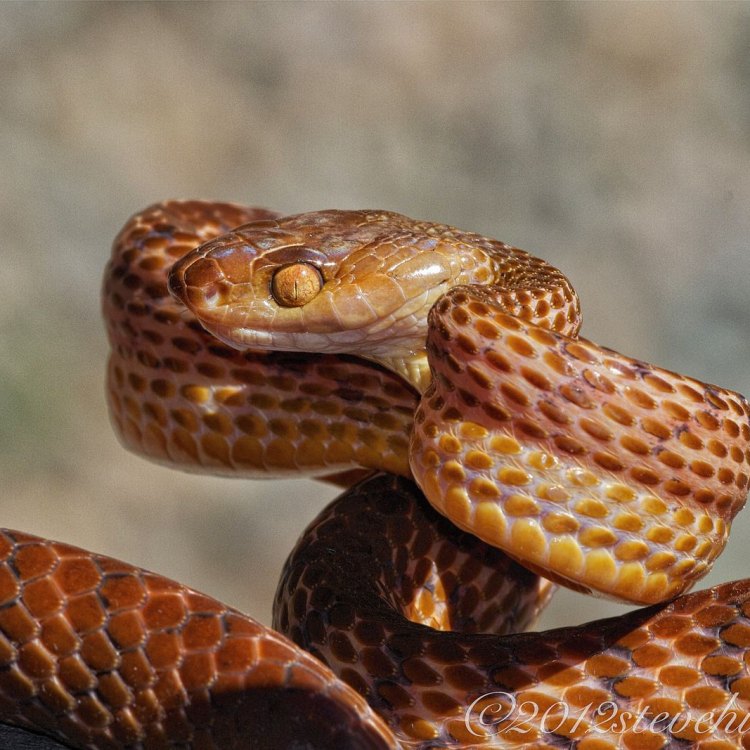
The Fear-Inducing Brown Snake: A Closer Look at Pseudonaja Textilis
Disclaimer: The content provided is for informational purposes only. We cannot guarantee the accuracy of the information on this page 100%. All information provided here may change without prior notice.

